So I planted this twig in the front yard a couple of years ago. I “won” it at the Native Plant Society annual auction, and I’ve been waiting all this time to figure out what it is and what it does. Of course, I knew when I picked it up that it’s called limber caper (Capparis flexuosa), and that it’s a more sprawling, “recumbent” relative of the upright, pyramidal shrub Jamaica caper (Capparis cynophallophora). But other than that, I’ve not really known too much about it.
It doesn’t seem to have made much of an effort to grow larger or wider, although it’s reported to grow to into a 10–20 foot tall tree.
I haven’t seen much of a flower, either, apart from a single, rather unimpressive one from last August:
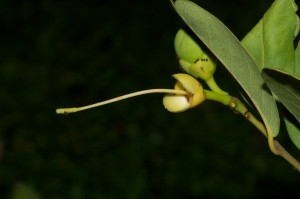
The ants seem to like the flowers, although whether they’re attracted to the pollen or some nectar that I can’t find, I’m not sure.
It’s a year on from that first flower, now, and I still haven’t been much impressed on the flowering front. The other evening, though, as the boys and I were coming back from our semiregular mulberry harvest (the across-the-street neighbor has a wonderful mulberry tree with luscious berries) I saw a much more impressive flower on this little shrub. I’m starting to understand the appeal of this species:
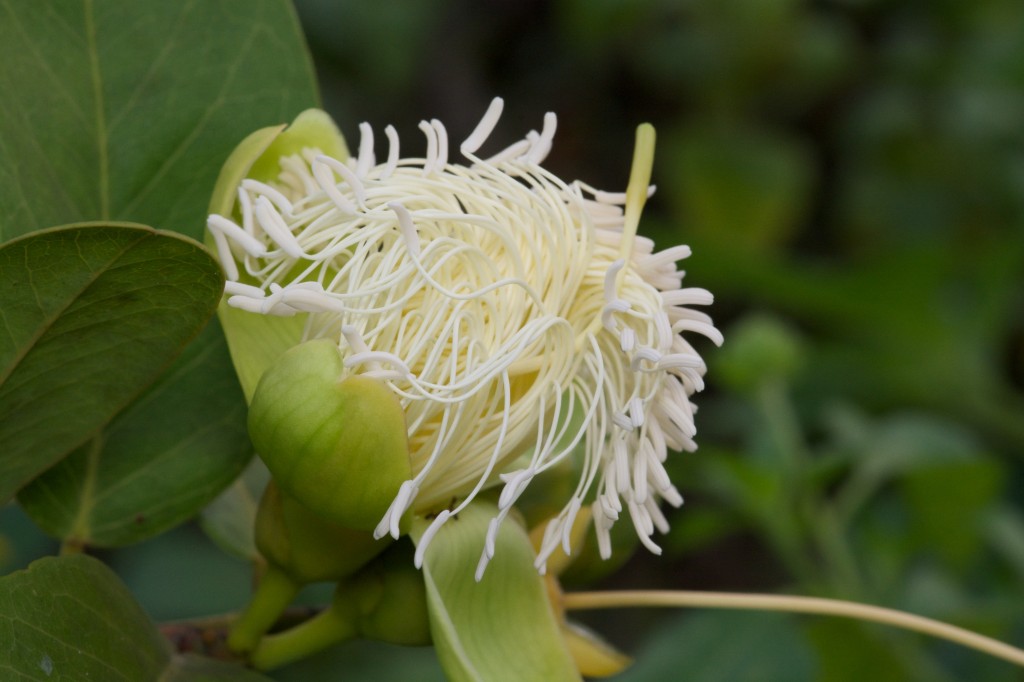
The flower bud has begun to open, and the long stamens have yet to unfurl completely, but you can just see the explosion that’s waiting to happen.
Just like fireworks, though, the best viewing takes place after dark (shortly after the picture above was taken, it was far too dark for nonflash photography). Good thing I have a flash, though, right? Here’s the after-dark image:
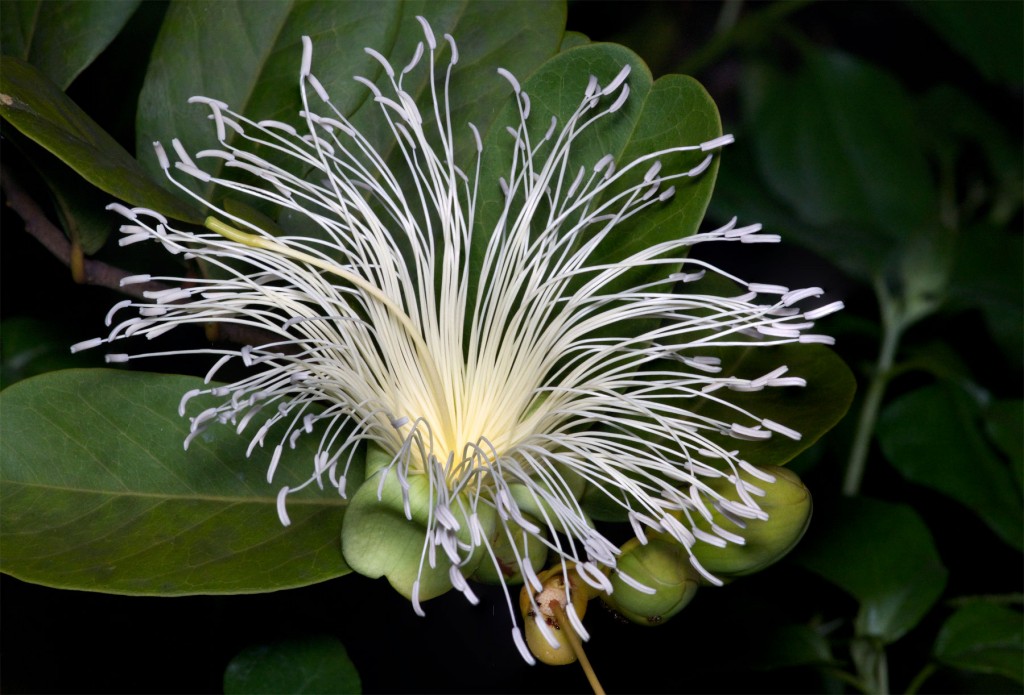
The next morning, though, early, you can see what happened:
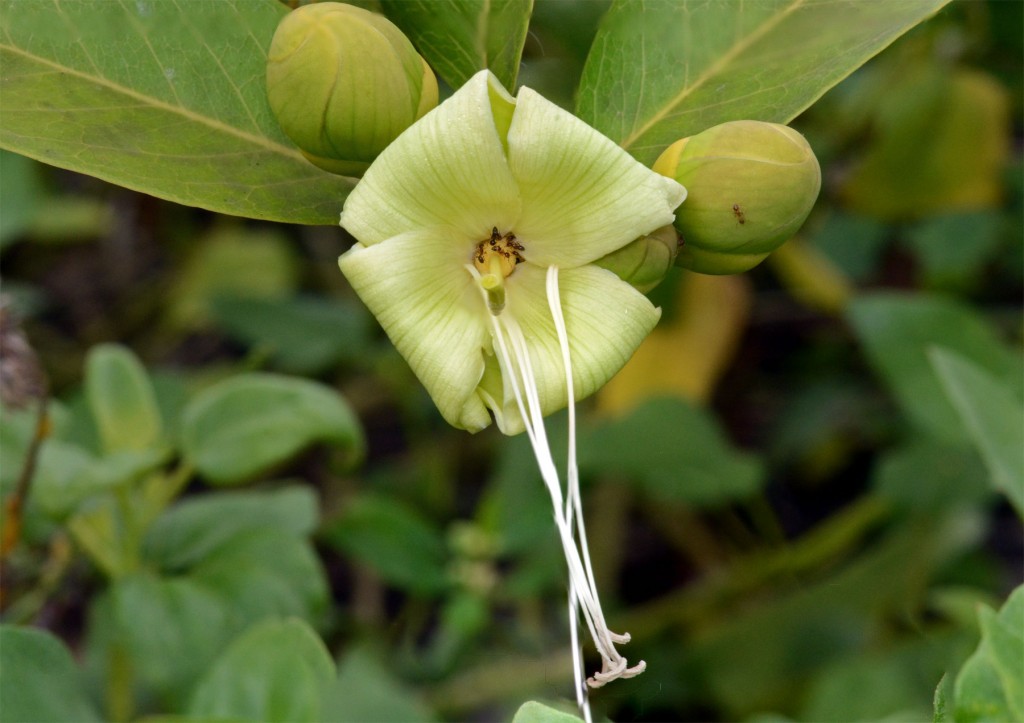
Very few of the long stamens remain, and once again the main attraction appears to be the ants. We’re back to the drab, uninteresting type of flower I saw last year. (This is actually a photo from the day BEFORE the previous shot, but it’s representative of the flower after all the anthers and stamens drop off. More interesting to the ants than to the flower devotee.) You can see that the petals haven’t fallen off yet, unlike the photo from last year, where nothing remains but one lonely stamen and the “cup” that the flower formed in.
But you can also see the promise of the future in this shot above: there are at least three unopened buds behind this little flower, just waiting for their moment in the sun…er, dark.
If the plant ever grows large enough to start fruiting, I understand that it can be a food source for birds. Even if the fruits don’t come, though, the plant is a larval host plant for Florida white (Appias drusilla) butterflies and is reported to be an occasional larval host for great southern white (Ascia monuste) butterflies. I hain’t found no caterpillars yet, though.
Here, just for comparison purposes, is the multicolored flower of the Jamaica caper:
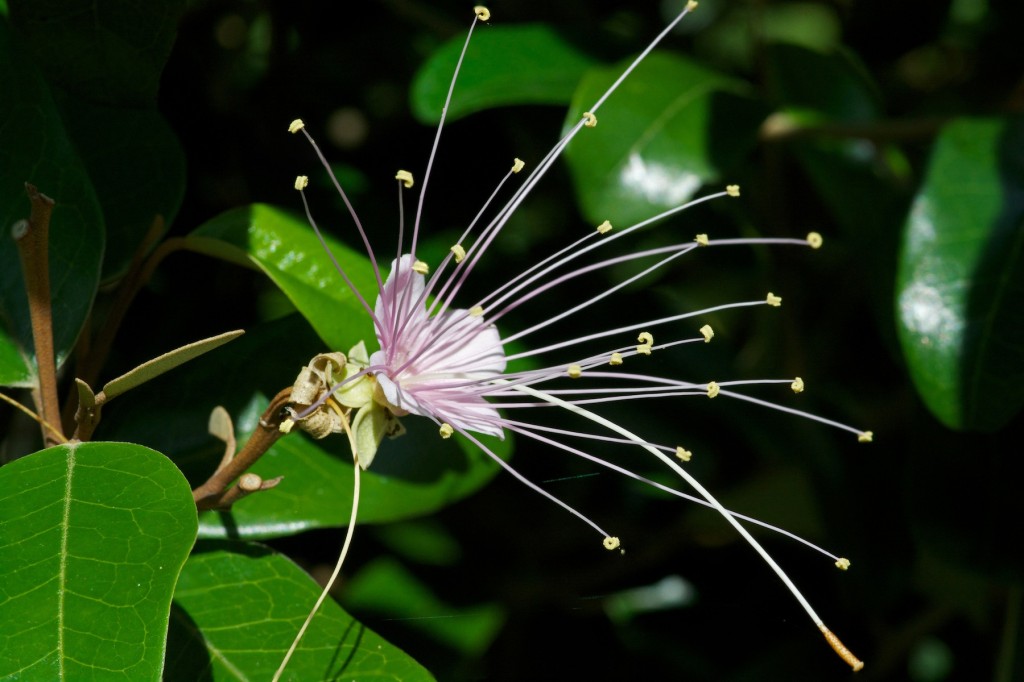
It’s pink, but apart from that, there’s not really all that much difference. The limber caper flower might be a bit bigger (my reference books say that limber caper is “showier”), but the colors of the Jamaica caper are really quite nice. And, at least in my limited experience, there are a lot more of them. Still, if my limber caper ever grows up, I imagine there’ll be a spirited rivalry.
I’m looking forward to it!

I have a 10-year old limber caper that, between mid-June and end of July has upwards of 2-65 blossoms at a time, for a six week record of about 500. Much more showy than Jamaica caper. Blooms open between 5 and 6, stay open all night, fall apart at full light. Bees are very busy at first light and return to the spent flower stamens and cups all day.